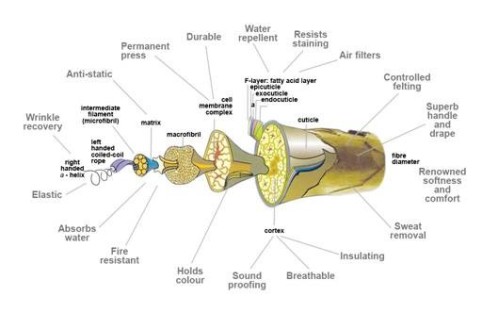As an interior designer, who once suffered from the agonizing effects of Fibromyalgia, I spent a lot of time researching and speaking with medical professionals in hopes of understanding my illness. In my research to find my cure I discovered that endocrine disrupting chemicals play a huge part in the development of fibromyalgia and other autoimmune diseases. My first blood test revealed I had 350 times too many male hormones. OMG, you can image what that does to a woman! I was so emotional I would cry if the waiter brought me the wrong order, and I was so aggressive I struggled to practice healthy communication…. Does anyone relate?
It was almost 18 years later that I found the help I needed to be cured of Fibromyalgia and live a pain-free life. Through testing I learned of the incredibly high levels of toxic chemicals in my body, many of which were endocrine disrupters showing up as pesticides, phthalates, dioxin and heavy metals like mercury. Where the heck were these chemicals coming from and how were they getting in my body????
Endocrine disruptors are chemicals that wreak havoc on the human hormonal system (also called the endocrine system) by sending signals to our hormonal glands to increase or decrease the productions of certain hormones out of normal ranges. They often imitate a hormone like estrogen and can sometimes turn one hormone into another; cause a cell to die prematurely, compete for essential nutrients and even accumulate in organs that produce hormones. The last thing any of us (male or female) need is more estrogen than our bodies are designed to have. You can imagine what happens if a young child gets large doses of estrogen before they have reached the age of puberty…. If it’s a girl they could go into puberty too early, if it’s a male it could lower sperm count and other harmful effects. And too much estrogen in adults has been linked to weight gain, heart disease, diabetes, and cancer in both males and females.
As an interior designer I’m constantly handling new fabrics, and in contact with upholstery, bedding, new carpet and drapes. In addition, I’m out on project sites where paints, stains, and varnishes are being used along with woodwork fabrications and various other components used to create beautiful homes. Turns out that’s how a lot of the chemicals show up. We bring them into our homes through finishes, fabrics, furniture and the products we use to clean our homes and our bodies. We all have exposure risks; interior designers are not singled out here.
Let’s take a look at the 12 most prevalent endocrine disrupters to see what health affects they have, where they are found and how to avoid them. This information is compiled from a variety of sources that I used for my own healing process. I’m not a chemist and I’m assuming you aren’t either or you wouldn’t need to read this. So I will keep this simple and avoid as much scientific jargon as I can. Hopefully this information will be useful and you will be able to make healthier choices as a result.
- Phthalates –a group of chemicals used to soften and increase the flexibility of plastic and vinyl, i.e. plastic water bottles. They have the ability to transfer to whatever they come in contact with. Phthalates are used in cosmetics and personal care products, including perfume, hair spray, soap, shampoo, nail polish and skin moisturizers. (Wait; aren’t these products supposed to make us clean, soft and smell good?) They are also used in such consumer products as flexible plastic and vinyl toys, shower curtains, wallpaper, vinyl miniblinds, paints and finishes, food packaging and plastic wrap. They are in many synthetic fibers used in carpeting recycled from plastic bottles and other forms of polyester and is also used in some foam products. Consider just how many products in your home contain phthalates….
Studies show that phthalates can trigger what’s known as “death-inducing-signaling” in testicular cells, making them die earlier than normal. What man needs cell death in his man parts? Yikes!! In addition, studies have linked phthalates to hormone changes, lower sperm count, less mobile sperm (the slow sperm does not get the egg), birth defects in the male reproductive system, obesity, diabetes and thyroid irregularity.
Solution: Avoid phthalates by reading labels and eliminating things with the word “fragrance” in the ingredient list. Use glass or stainless steel containers for food and water. Wear and upholster with natural fibers like cotton and wool that have not been treated with anti-stain, anti-wrinkle and mothproofing coatings. Sleep on organic mattresses. Many paints & architectural finishes contain phthalates, so be sure to choose a Non-toxic paint, like Mythic or SafeCoat. Use wax paper or butcher’s paper to wrap foods when possible, like when freezing meat.
Now that doesn’t seem so difficult; simple changes to make us healthier.
- BPA – used to make plastics hard and ridged, it is also a chemical component of epoxy resin used in a wide range of building materials including high performance coatings (paints, floor sealers and other protective coatings), adhesives and fillers (caulk, grout, mortar and putty), fiberglass binders and cement additives.
BPA has been linked to everything from breast and prostate cancers to reproductive problems, behavioral problems, obesity, early puberty and heart disease. Studies show that 93% of Americans have BPA in their bodies. BPA mimics the sex hormone estrogen in the body…and the results are not nice. Studies show it interferes with brain development and can affect fat metabolism, potentially increasing risk of diabetes and obesity.
Solution: BPA can be avoided by eating fresh instead of canned, as it’s used to line the inside of many food cans. Go green and have your receipts emailed to avoid contact with thermal paper often coated with BPA. Use glass and metal instead of plastic containers made with polycarbonate (marked PC or recycle label #7), as many of these are made with BPA. Until recently, many children’s hard plastic toys were made with BPA, so always check the labels to be sure. Avoid the use of epoxy resin products and choose non-toxic alternatives instead from companies known for their safe products like SafeCoat, Mythic and Ecoprocote. Now we’re on a roll….
- Dioxin – is the common name for the chemical 2,3,7,8-tetrachlorodibenzo-p-dioxin, or TCDD. That’s a mouthful!
Dioxins are a group of chemically related compounds that are persistent environmental pollutants (POPS). They are highly toxic and can cause reproductive and developmental problems, damage the immune system, interfere with hormones and also cause cancer. Recent research has shown that exposure to low levels of dioxin in utero and early in life can both permanently affect sperm quality and lower sperm count in men during their prime reproductive years. And that’s not all! They are accumulative in the body, usually in body fat.
More than 90% of human exposure is through food, mainly meat and dairy products, fish and shellfish, as it collects in the fatty tissue of these foods. The other means of exposure is by coming in contact with a wide range of manufacturing processes including smelting, chlorine bleaching of paper pulp and the manufacture of some herbicides and pesticides. TCDD was an ingredient in the herbicide, Agent Orange, used during the Vietnam War.
Solution: The best means of prevention or reduction of human exposure is done via source direct measures, i.e. strict control of industrial processes to reduce formation of dioxin. Another way would be to limit the amount of animal fat in your diet. Consume a higher ratio of fruits and vegetables and use a whole house water filter to extract this chemical from your bathing and drinking water.
- Atrazine– one of the most widely used farm pesticides in the United States, has been found to feminize male frogs and other animals in several scientific studies. Follow up studies in the wild found that atrazine either turned male tadpoles into female or “demasculinized” them, causing eggs to grow in their testes and rendering them unable to reproduce. A few studies have found possible connections between atrazine and higher rates of some human birth defects and poor semen quality in men in farming areas that use atrazine.
Europe banned atrazine in 2003 because of its widespread discovery in water supplies. However, the EPA seems to think that similar levels in drinking water are acceptable for Americans. Do you agree?
People and ecosystems are more susceptible if they are close to a farming area and if they drink runoff water. Contamination of the water supply is a growing concern. When sprayed on crops, atrazine can drift up to 100 miles making inhalation another pathway of contamination for humans and animals.
Solution: The best way to avoid this chemical is, of course, to not use it on crops. Barring that option, the use of a whole-house water filtration system designed to remove chemicals (not just particulates) is highly recommended. And if you live near farmland using this product (or other pesticides), a whole house air filtration system or portable air filtration system that utilizes carbon filtration to remove chemicals is highly recommended. Air Austin has HEPA filters w/ Carbon that come is varying sizes to fit your square footage needs.
- Perfluorinated chemicals (PFCs) – are a group of man-made compounds, based on the element fluorine, which are widely used to create water and soil repellency in fabrics like Crypton, Crypton Green, Teflon, Gore, Stainmaster, Scotchguard, Nano-Tex and GreenShield. They are also used in a variety of specialty applications like insecticides, firefighting foam and non-stick cookware.
Although originally created to make our lives easier, PFCs are so widespread and extraordinarily persistent that 99 percent of Americans have these chemicals in their bodies. Many of these chemicals do not break down in the environment- ever. Exposure to one in particular, known as PFOA, has been linked to decreased sperm quality, low birth weight, kidney disease, thyroid disease and high cholesterol, among other health issues.
Solution: The best way to avoid PFCs is to ditch the Teflon, non-stick pans and get rid of clothing, furniture upholstery fabric and carpeting with stain and water-resistant coatings (listed above). And please send a letter to your senator asking for his/her help to get these chemicals discontinued from use in manufacturing.
- Fire retardants – one of the persistent chemical components found in fire retardants, polybromated diphenyl ethers or PBDEs, has been found to contaminate the bodies of humans and wildlife around the globe. It is used on most upholstery and mattress foams, synthetic carpet pads and electronic cases. The levels of PBDEs in breast milk have been doubling every five years since 1972. These chemicals can imitate thyroid hormones in our bodies disrupting thyroid activity and have been linked to brain and reproductive damage and lower sperm count.
Although several kinds of PBDEs have recently been phased out, many of the products that contain them are still in use today, and they persist in our environment for years. If your mattress, upholstered pieces or electronics are older than five years, you may well be sitting/sleeping on/using products that contain PBDEs every day.
And many of the fire retardants that have replaced them are made of undisclosed chemicals that have not been tested for safety. Because they are applied to foam, over time these chemicals flake off and become dust in your home that can be ingested or inhaled. I hope the irony is not lost on you – fire retardants are meant to keep us safe, but they are slowly poisoning us.
Solution: The best way to avoid the ones that have been banned is to replace your mattress (especially crib mattresses) and furniture with products made after Jan. of 2015. Or better yet, get organic bedding and furniture that aren’t made with these and other toxic chemicals. Use a HEPA vacuum and air filters to pull the particles out of your air. Replace synthetic carpet pad with natural latex rubber or wool padding, or get rid of wall-to-wall carpeting altogether.
Get proactive and ask for better toxic chemical laws that require chemicals to be tested before they go to market reducing exposure. (Safe testing practices shouldn’t be too much to ask for.)
- Perchlorate – a component of rocket fuel and naturally occurring in nature, contaminates much of our milk, food and water, according to the EWG and government test data. It can be inhaled or ingested, but doesn’t appear to enter the body trans-dermally. It enters our foods and milk via the water used to irrigate and drink.
The main organ targeted by perchlorate toxicity is the thyroid gland, affecting its ability to synthesize iodine necessary for thyroid hormone production. This is important because these hormones regulate metabolism in adults and are critical for proper brain and organ development in infants and young children.
Solution: The best way to avoid perchlorate ideally is to use a whole house water filter designed for chemical removal. If that is not possible use a reverse osmosis water filter for drinking and cooking water. EWG.org offers a buying guide on water filters. Because it‘s impossible to separate perchlorate from your food, it’s best to be tested for healthy iodine levels and supplement accordingly. Feeling the need for a whole-house water filtration system yet?
- Lead – a toxic heavy metal to avoid at all cost. It is well known that it’s toxic, especially to children, but did you know that lead harms almost every organ system in the body and has been linked to a staggering number of health effects, including permanent brain damage, lowered IQ, hearing loss, miscarriage, premature birth, increased blood pressure, kidney damage and nervous system disorders. A lesser-known fact is that lead can disrupt hormone signaling that regulates the body’s major stress system (called the HPA axis), making it harder for your body to handle the stress in your life. And we all know that stress can affect high blood pressure, diabetes, anxiety and depression. At high levels of exposure it can cause convulsions, coma and even death.
Lead was a component of paint until the 1970s when it was banned for use, but it took many years to phase it out completely. If you live in an older home one of the early layers of paint may be lead, which becomes hazardous when it begins to chip and peel or is sanded causing it to become airborne. Another source of exposure is through indoor activities such as soldering and stain-glass making.
Solution: The best ways to avoid lead exposure is to have old lead paint professionally remediated and use a HEPA air filter to pull lead laden dust from the air. Dust and mop surfaces (especially those a child might chew on) with warm water mixed with dishwasher detergent (Recommended because of their high content of phosphate). Most multipurpose cleaners will not remove lead in ordinary dust. Wash toys and stuffed animals frequently and encourage regular hand washing.
- Arsenic – best known for its use as a tool for murder or rat poison; if you eat enough it will do you in! Arsenic is present in most drinking water and in some foods because it occurs naturally in the ground. In small doses arsenic can cause skin, bladder and lung cancer. And if that’s not bad enough it also interferes with the normal hormone function of the glucocorticoid system that regulates how our bodies process sugar and carbohydrates. Disrupting the glucocorticoid system has been linked to weight gain/loss, protein wasting, immunosuppression, insulin resistance, osteoporosis, growth retardation and high blood pressure.
Solution: The best way to avoid arsenic is to use a water filter with a charcoal cylinder to remove chemicals and heavy metals. Again, check out the EWG.com site for a review of water filters to help you choose the correct type. Have you noticed the trend yet?
- Mercury – a naturally occurring, but toxic metal gets into the air and ocean primarily through the burning of coal. Because coal has many industrial and biological uses, this byproduct is putting you at risk. In the oceans it contaminates seafood, which may eventually end up on your plate. It is part of a compound that has for years been used to fill the holes in teeth left by cavities. And it can even show up in your home in the form of sheetrock because gypsum that was used to clean the flues of coal burning plants can get recycled into sheetrock. Did you know mercury can off gas at room temperature, which is why there is a warning on the compact fluorescent light bulbs (which are made with mercury) about safety measures should they break? Did you know that mercury could go right through your skin to enter the body? I was horrified when I learned this because as a child I had been allowed to play with mercury that escaped from a broken thermometer.
Pregnant women are the most at risk from the toxic effects of mercury because the metal is known to concentrate in the fetal brain and can interfere with brain development. Mercury is also known to attach itself to one particular hormone that regulates women’s menstrual cycle and ovulation, interfering with normal signaling pathways. Our hormones are not designed to work well with mercury glued to them. It has also been shown to damage cells in the pancreas that produce insulin, which is critical for the body to metabolize sugar, thus contributing to diabetes.
Solution: The best way to avoid mercury in seafood is to only eat wild caught, deep cold-water fish like cod and halibut. Avoid bottom feeders and shellfish.
Avoid mercury in the home by priming and painting sheetrock with coating designed to seal off vaporizing chemicals (known as off gassing), like SafeCoat Primer and Paint. Another way is to use LED light bulbs instead of compact fluorescent bulbs.
If possible have the old amalgam (mercury compound) fillings carefully removed by a dentist who specializes in mercury removal. They must use a rubber dam and vacuum while extracting it or you will get sick. I know; it happened to me!
- Organophosphate pesticides – the EPA says organophosphates (OPs) are some of the most common, and most toxic insecticides used today. They adversely affect the human nervous system, even at low levels of exposure. As endocrine disrupters, organophosphates have a significant impact on the human reproductive system. The presence of OP metabolites in the body is linked with reduced levels of testosterone and other sex hormones. Exposure to OPs may have an adverse effect on male fertility and can alter thyroid hormones.
Developing children are the most susceptible to organophosphates. They can be exposed to OPs through the air, food, dust and soil and even pets. Symptoms of acute exposure include nausea, headaches, twitching, trembling, excessive salivation and tearing, difficulty in breathing and, at higher doses, death.
Solution: The best way to avoid OPs is to buy organic produce, and to avoid using them to control pests in your home, on your yards and on your pets. Some common OPs are diazinon, Malathion, chlorpyrifos and dimethoate. Detailed information on specific OP pesticides is available in Pesticide Action Network’s website.
- Glycol Ethers – a group of chemicals found in many households in the form of paints, cleaning products, air fresheners, brake fluid and cosmetics. Animal studies have found that glycol ethers cause testicular atrophy (as in shriveled testicles) and infertility in lab rats, and the European Union says some of these chemicals “may damage fertility or the unborn child.” Women exposed during pregnancy may be at risk of spontaneous abortion and subfertility. This is nothing to fool around with! Children who are exposed to glycol ethers in the form of bedroom paint are found to have substantially more asthma and allergies.
Solution: The best way to avoid it is to use healthy cleaning products like 7th Generation, Branch Basics, baking soda and vinegar. EWG has a Guide to Healthy Cleaning on their website. SafeCoat also offers several non-toxic options for cleaning your healthy home.
Well, we made it through the 12 most prevalent hormone disrupters. Now what changes are you going to make in your home, in your diet, and in your life? Consider the water and air quality in your home and external ecosystems. Let’s start a healthier tomorrow together.
If you’re feeling the desire to make some of these changes and aren’t sure where to start, I can help! I have made these changes in my life and I am eager to help others find solutions too. Healthy Interior Design is not only possible; it’s what we all deserve to have. I care about you and your family’s health and well-being, contact me if you have questions.
Helping People Heal, One Home at a Time.
Sandra
 But those who do want powder blue often ask why natural dyes are no longer used to create color. Well, over one hundred years ago synthetic dyes came into use, and due to population growth and the need to use irrigable land for crops, we no longer have indigo, saffron, madder, and woad strictly for use as dyes. Additionally, natural dyes generally have poor light fastness properties and require heavy metal mordant (to help natural dyes affix to the fiber) so they really aren’t an environmental improvement. However, the dyes used to color wool are all well-established acid dyes which, by comparison, have no toxicity concerns and are not hazardous to the environment since exhaustion of the dyes onto wool is almost 100% leaving only minimal traces of dyes in the outflow. Read this again, it may be on the final exam.
But those who do want powder blue often ask why natural dyes are no longer used to create color. Well, over one hundred years ago synthetic dyes came into use, and due to population growth and the need to use irrigable land for crops, we no longer have indigo, saffron, madder, and woad strictly for use as dyes. Additionally, natural dyes generally have poor light fastness properties and require heavy metal mordant (to help natural dyes affix to the fiber) so they really aren’t an environmental improvement. However, the dyes used to color wool are all well-established acid dyes which, by comparison, have no toxicity concerns and are not hazardous to the environment since exhaustion of the dyes onto wool is almost 100% leaving only minimal traces of dyes in the outflow. Read this again, it may be on the final exam.



